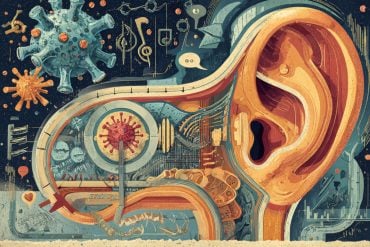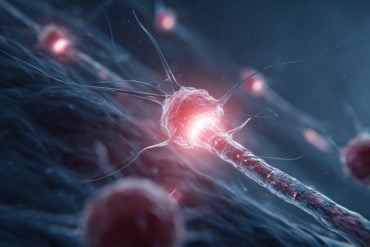Mouse model will help scientists parse brain-based findings.
A new Duke University study in mice links three previous and, until now, apparently unrelated hypotheses about the causes of schizophrenia, a debilitating mental disorder appearing in late adolescence that affects how people think, act and perceive reality.
The brains of people with the schizophrenia show various abnormalities, including faulty neural connections or an imbalance of certain brain chemicals. However, it has been unclear whether such brain-based observations could be related to one another or could describe different types of schizophrenia.
Published May 4, 2015, in Nature Neuroscience, the new findings may eventually lead to treatment strategies targeted for the underlying causes of schizophrenia and related disorders, said the study’s corresponding author Scott Soderling, an associate professor of cell biology and neurobiology in the Duke School of Medicine.
Schizophrenia is complex at every level, from genes to brain to behavior, said Soderling, who is also a member of the Duke Institute for Brain Sciences. People with the illness show a wide range of symptoms that vary in severity. Genome-wide association studies have implicated hundreds of mutations that might confer risk.
In 2013, Soderling’s group selected one of those gene candidates, Arp2/3, based on its importance in controlling the formation of synapses — the links between neurons — and its association with multiple neuropsychiatric disorders. They deleted the gene from the excitatory neurons in the forebrains of mice.
To their surprise, mice lacking Arp2/3 showed several behaviors reminiscent of schizophrenia. And just as in the human disease, the mice seemed to worsen over time. Antipsychotic medications, a mainstay of treatment for schizophrenia, alleviated some of the animals’ symptoms.
In the new study, Soderling, postdoctoral researcher Il Hwan Kim, and their team characterized three brain abnormalities in the Arp2/3 mice that also appear in people with schizophrenia.
One is the ‘spine pruning theory,’ supported by the observation that the frontal brain regions of people with schizophrenia have fewer dendritic spines, the tentacles on the receiving ends of neurons that process signals from other cells.
These mice, by nature of their genetic deletion, lose dendritic spines as they age, the group confirmed.
A second observation in people with schizophrenia is hyperactive neurons, which are also in the front of the brain, a region that is involved in planning and decision-making.
Surprisingly, the study found the mice missing Arp2/3 also have this feature. At first, it seemed that a brain area with fewer spines couldn’t also be hyperactive. However, using high-resolution microscopy, the team found that neurons were rewired to bypass the dendritic spine, which acts as an electrical filter. Missing this filter can make the cells overactive, Soderling said.
A third theory, the ‘dopamine hypothesis,’ points to elevated levels of the brain chemical dopamine. Support for the theory comes from the observation that antipsychotic drugs, which block transmission of the brain chemical dopamine, alleviate motor agitation in people.
The fact that mice missing Arp2/3, and also showing motor abnormalities, seemed to get better with the antipsychotic drug haloperidol suggested that they have too much dopamine in their brains. But the new study found that the overexcitable neurons in the front of their brains connect to and stimulate the neurons dumping the dopamine.
“The most exciting part was when all the pieces of the puzzle fell together,” Soderling said. “When Dr. Kim and I finally realized that these three outwardly unrelated phenotypes (spine pruning, hyperactive neurons and excessive dopamine) were actually functionally interrelated with each other, that was really surprising and also very exciting for us,” Soderling said.
To confirm the links, the group harnessed cutting edge techniques in genetic engineering and viral gene delivery to switch on neurons in the front of healthy mouse brains. These animals started to move almost instantly, and their brains flooded with dopamine. Haloperidol reversed their symptoms.

Importantly, haloperidol alleviated the abnormal movements, but it did not restore the missing spines in the brains of Arp2/3 mice. As in people with schizophrenia, excessive spine pruning seems to occur earlier in life.
The group plans to study Arp2/3’s role in different parts of the brain and the role it has in the mouse’s other symptoms, such as sociability defects and cognitive abnormalities. They also plan to examine the potential affect of environmental factors, like stress, on the mouse’s brain and symptoms.
“We’re very excited about using this type of approach, where we can genetically rescue Arp2/3 function in different brain regions and normalize behaviors,” Soderling said. “We’d like to use that as a basis for mapping out the neural circuitry and defects that also drive these other behaviors.”
Funding: This research was supported by the National Institutes of Health (MH103374, NS059957, NS077986, AA021074, NS039444 and MH082441); the US National Research Foundation; Hungarian Academy of Sciences, by the Hungarian Scientific Research Fund (OTKA, grant K83830); the Szent István University, Faculty of Veterinary Science (Research Faculty Grant 2014); and the North Carolina Biotechnology Center.
Source: Karl Bates – Duke
Image Credit: The image is credited to Soderling lab, Duke University
Original Research: Abstract for “Spine pruning drives antipsychotic-sensitive locomotion via circuit control of striatal dopamine” by Il Hwan Kim, Mark A. Rossi, Dipendra K. Aryal, Bence Racz, Namsoo Kim, Akiyoshi Uezu, Fan Wang, William C. Wetsel, Richard J. Weinberg, Henry Yin, and Scott H. Soderling in Nature Neuroscience. Published online May 4 2015 doi:10.1038/nn.4015
Abstract
Spine pruning drives antipsychotic-sensitive locomotion via circuit control of striatal dopamine
Psychiatric and neurodevelopmental disorders may arise from anomalies in long-range neuronal connectivity downstream of pathologies in dendritic spines. However, the mechanisms that may link spine pathology to circuit abnormalities relevant to atypical behavior remain unknown. Using a mouse model to conditionally disrupt a critical regulator of the dendritic spine cytoskeleton, the actin-related protein 2/3 complex (Arp2/3), we report here a molecular mechanism that unexpectedly reveals the inter-relationship of progressive spine pruning, elevated frontal cortical excitation of pyramidal neurons and striatal hyperdopaminergia in a cortical-to-midbrain circuit abnormality. The main symptomatic manifestations of this circuit abnormality are psychomotor agitation and stereotypical behaviors, which are relieved by antipsychotics. Moreover, this antipsychotic-responsive locomotion can be mimicked in wild-type mice by optogenetic activation of this circuit. Collectively these results reveal molecular and neural-circuit mechanisms, illustrating how diverse pathologies may converge to drive behaviors relevant to psychiatric disorders.
“Spine pruning drives antipsychotic-sensitive locomotion via circuit control of striatal dopamine” by Il Hwan Kim, Mark A. Rossi, Dipendra K. Aryal, Bence Racz, Namsoo Kim, Akiyoshi Uezu, Fan Wang, William C. Wetsel, Richard J. Weinberg, Henry Yin, and Scott H. Soderling in Nature Neuroscience. Published online May 4 2015 doi:10.1038/nn.4015






